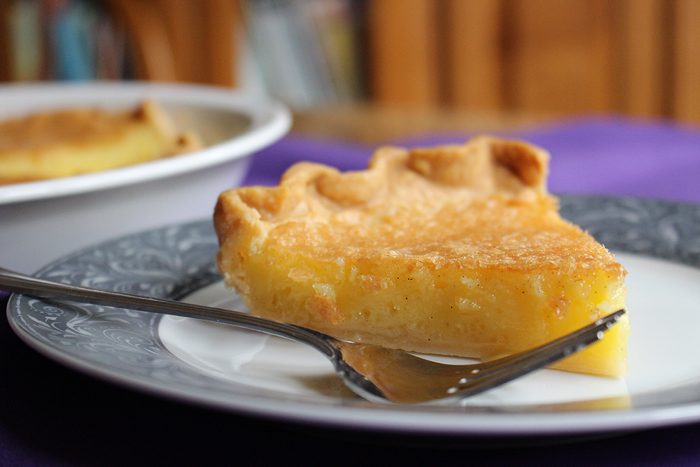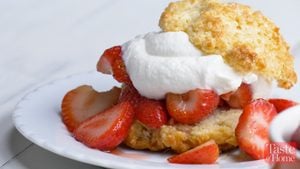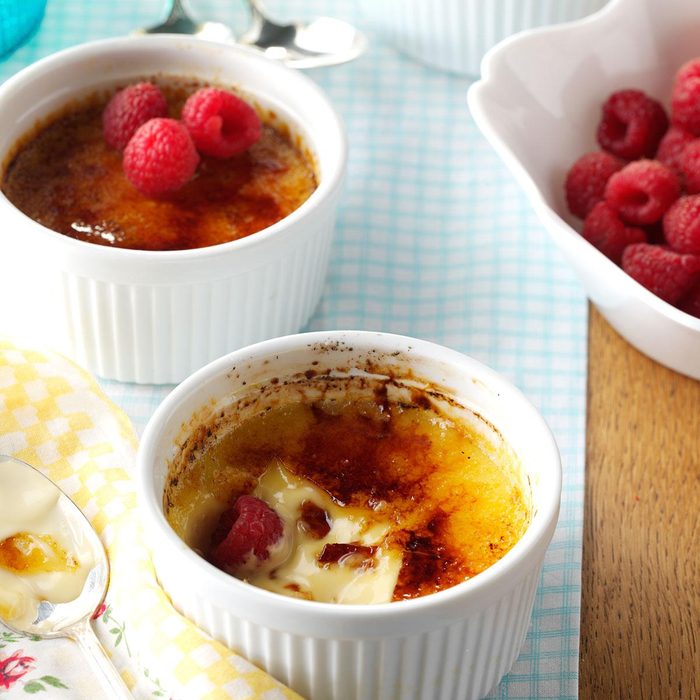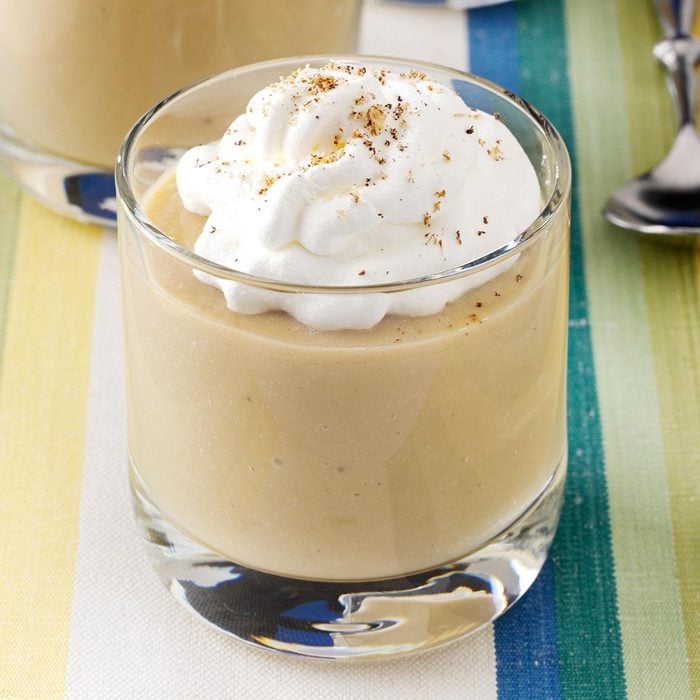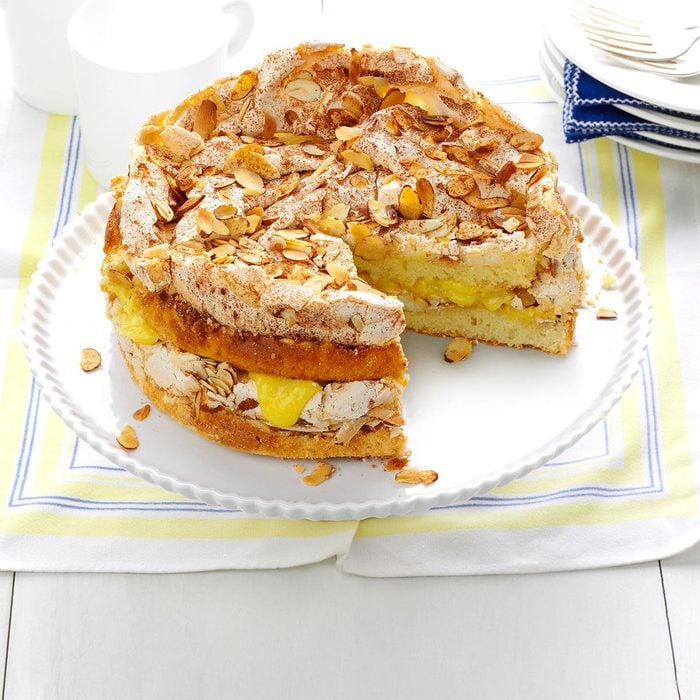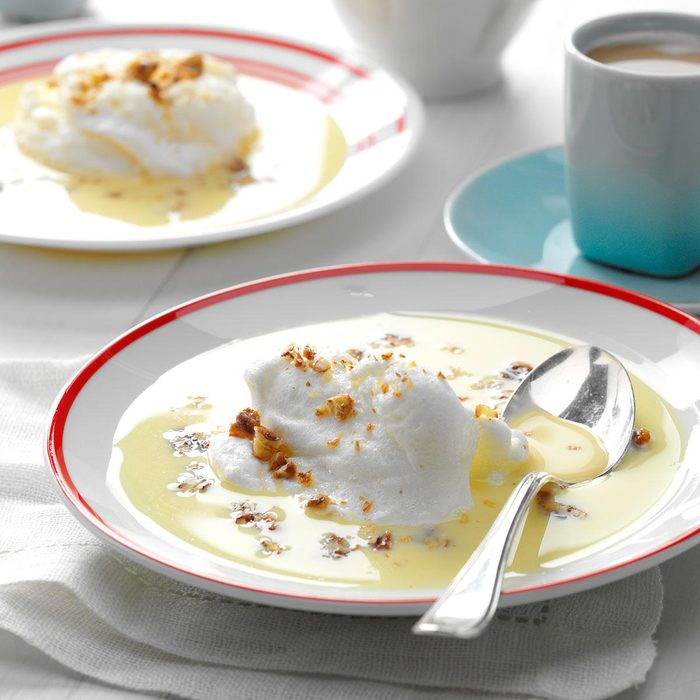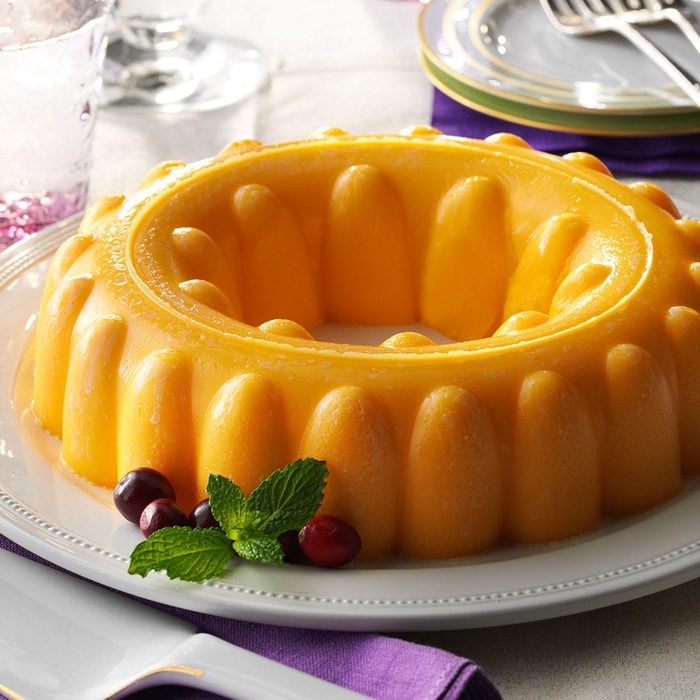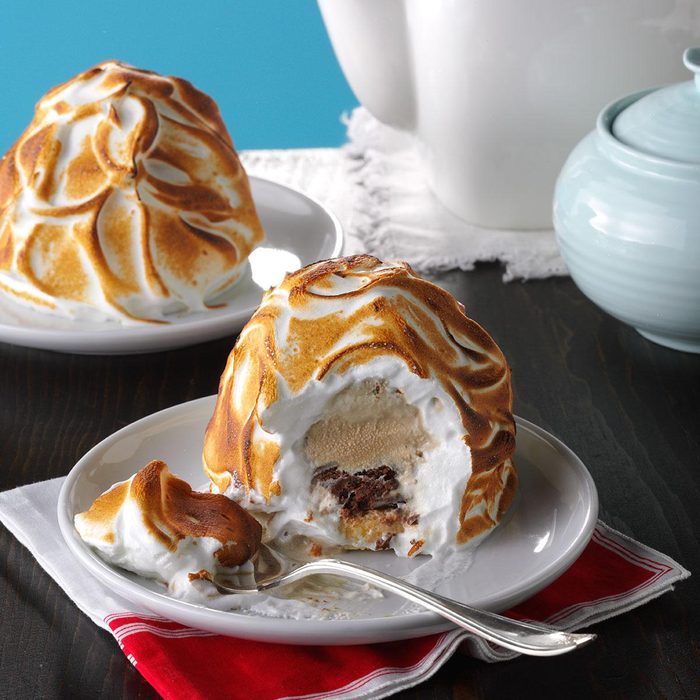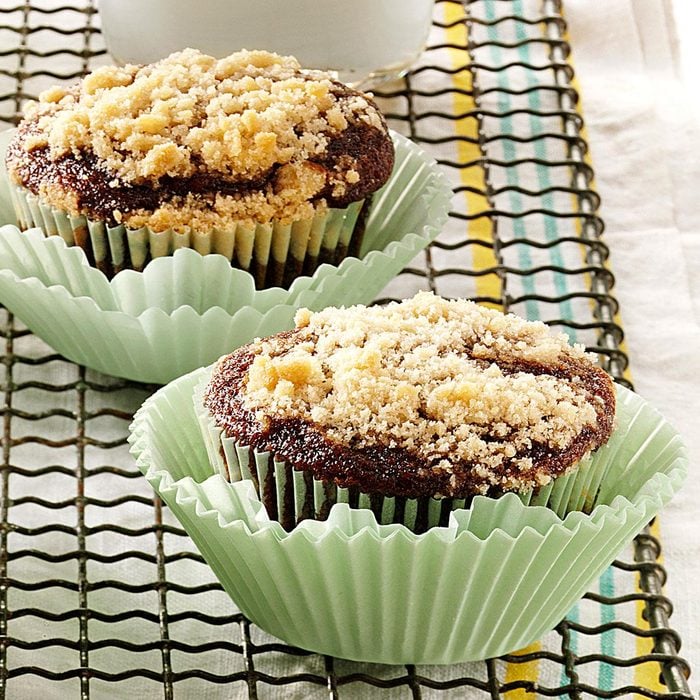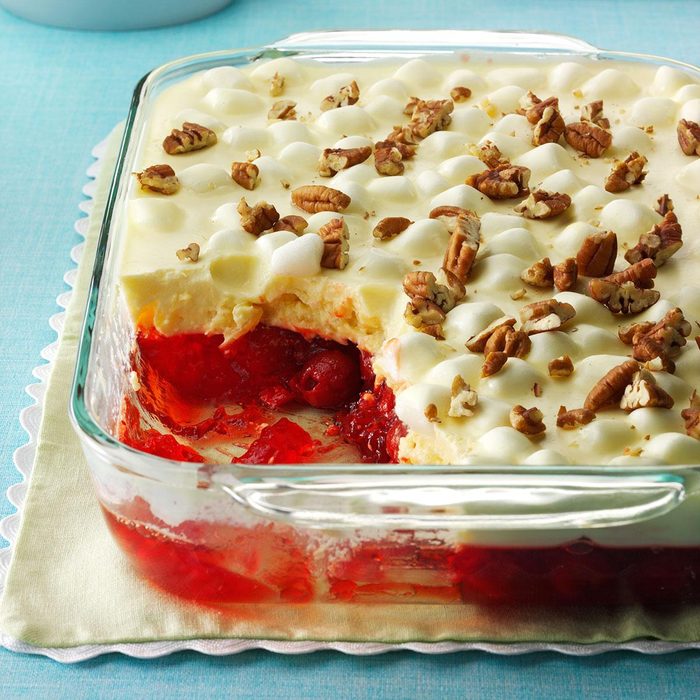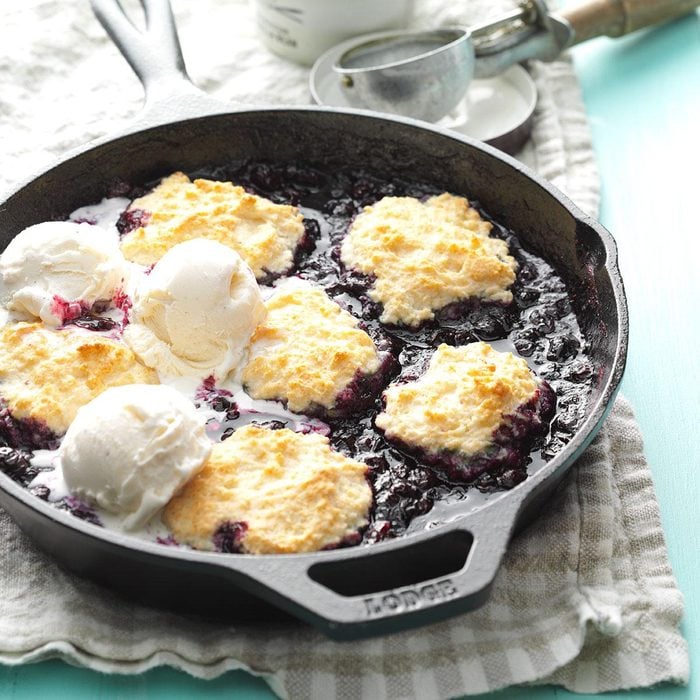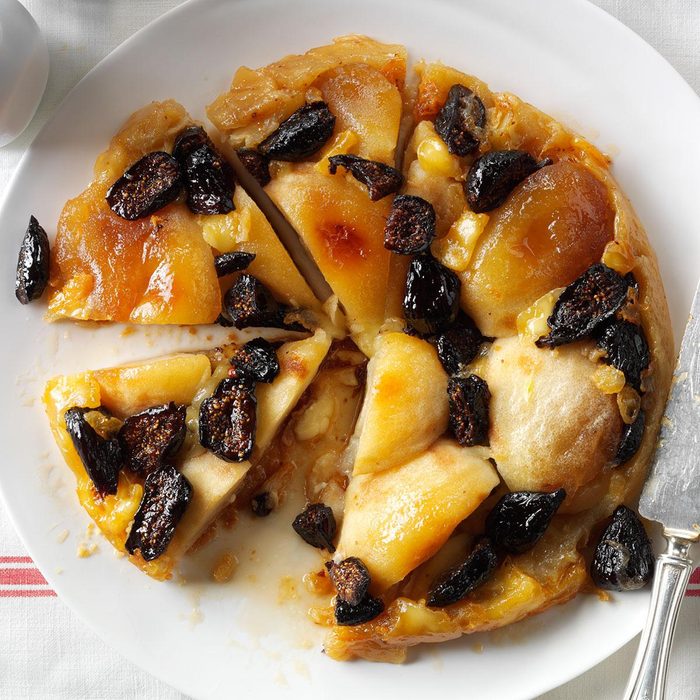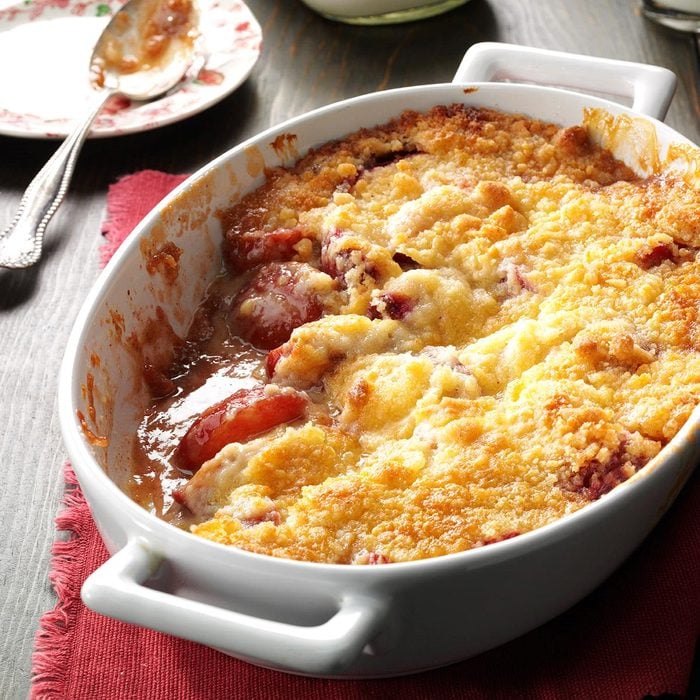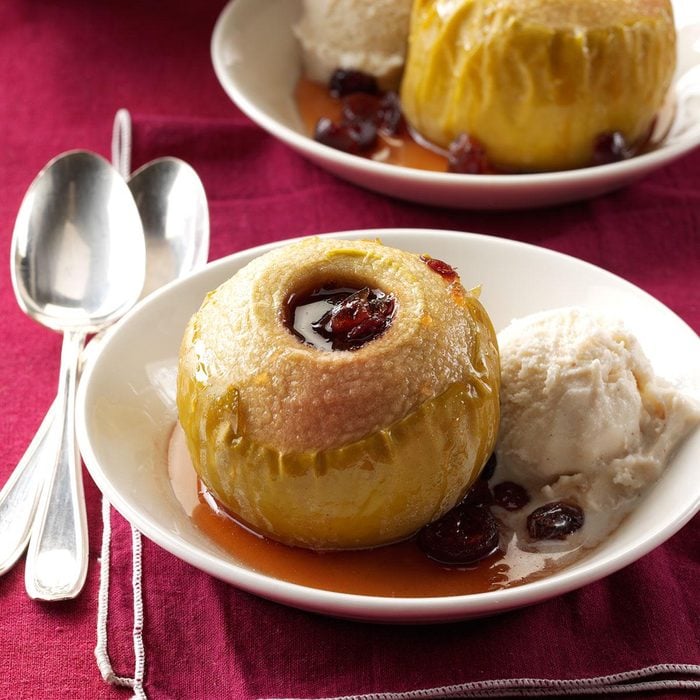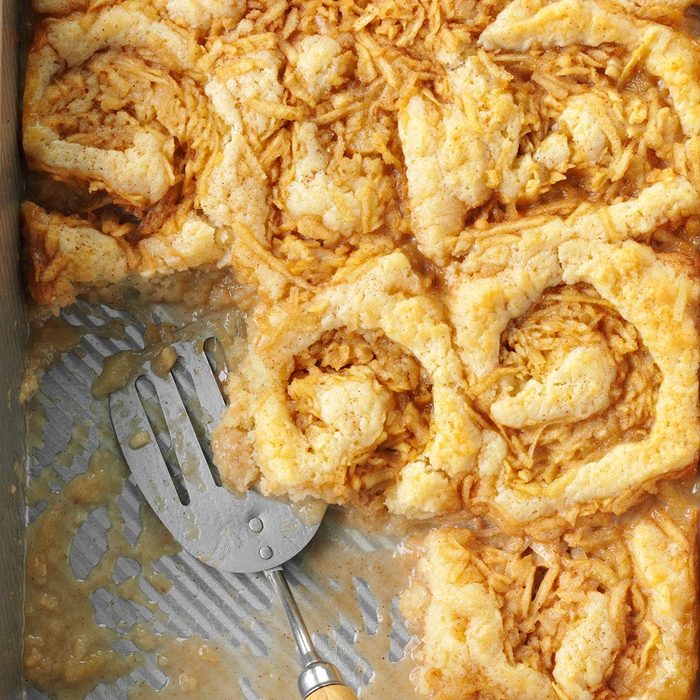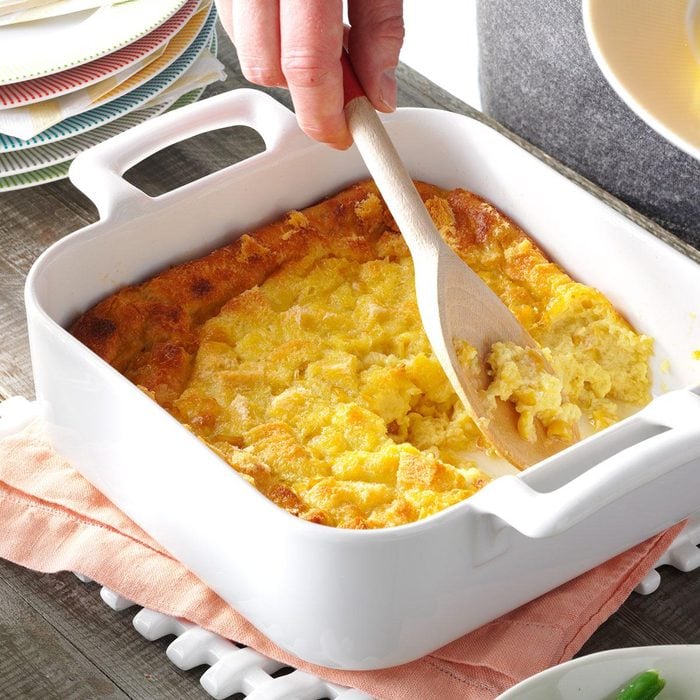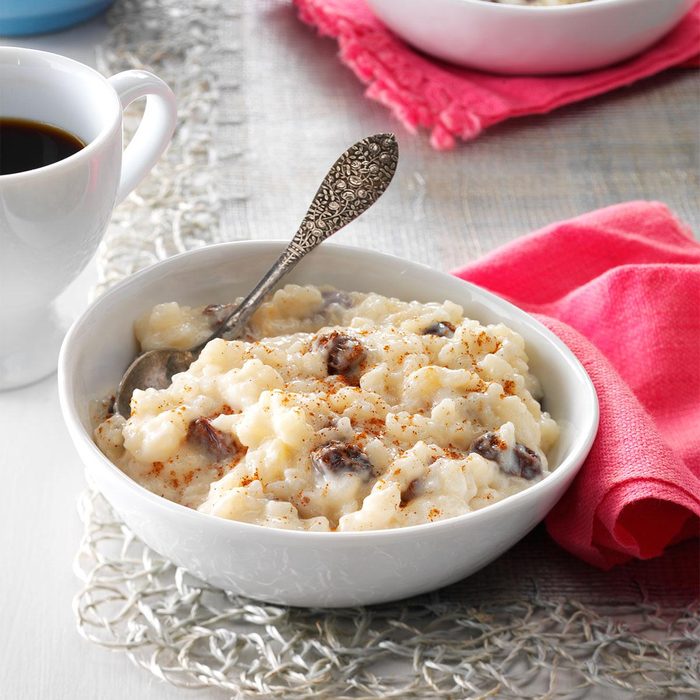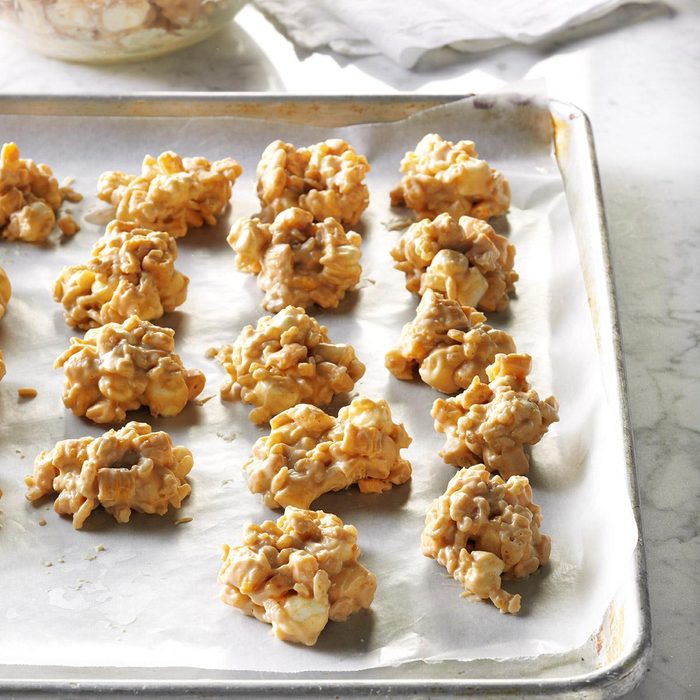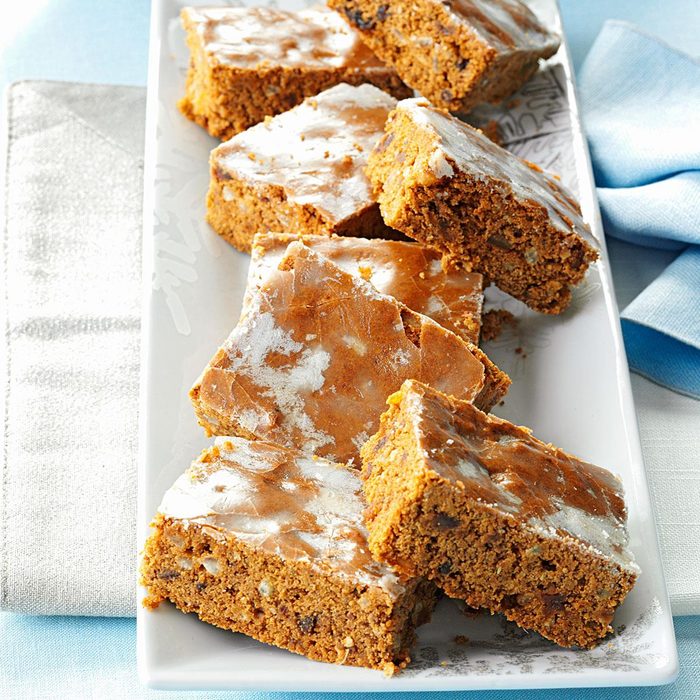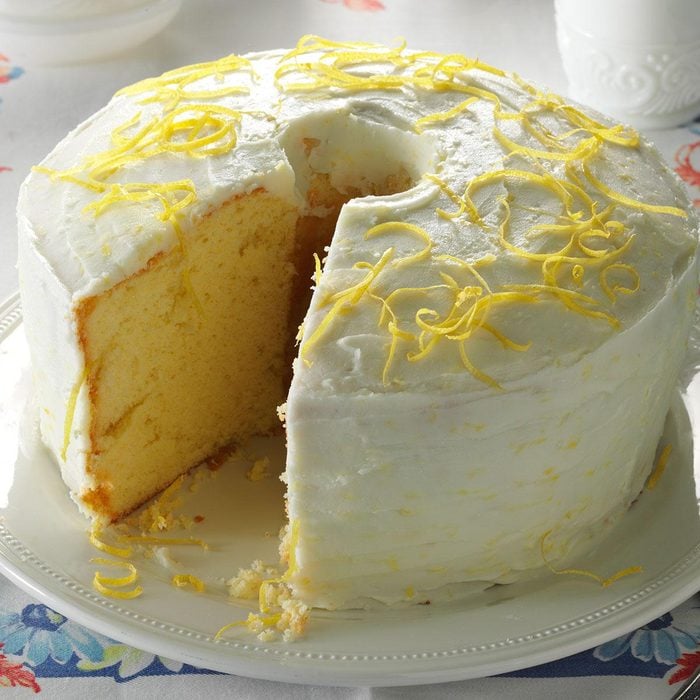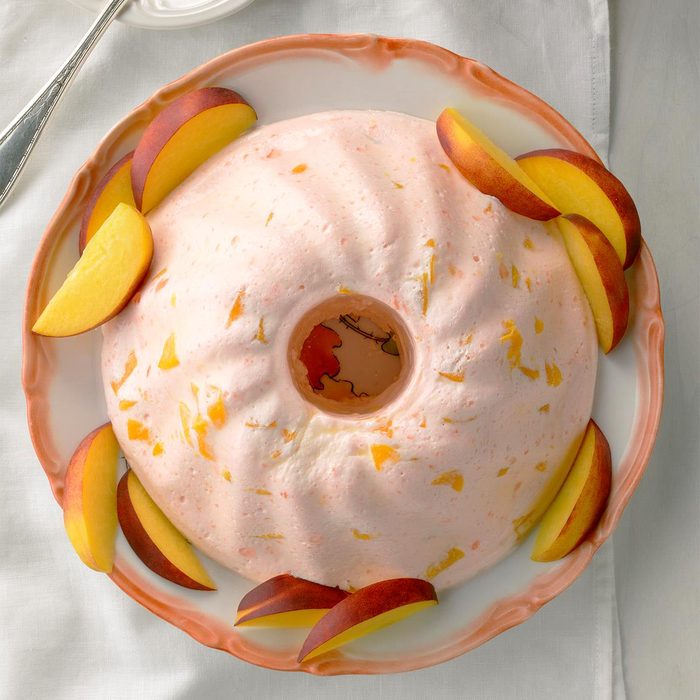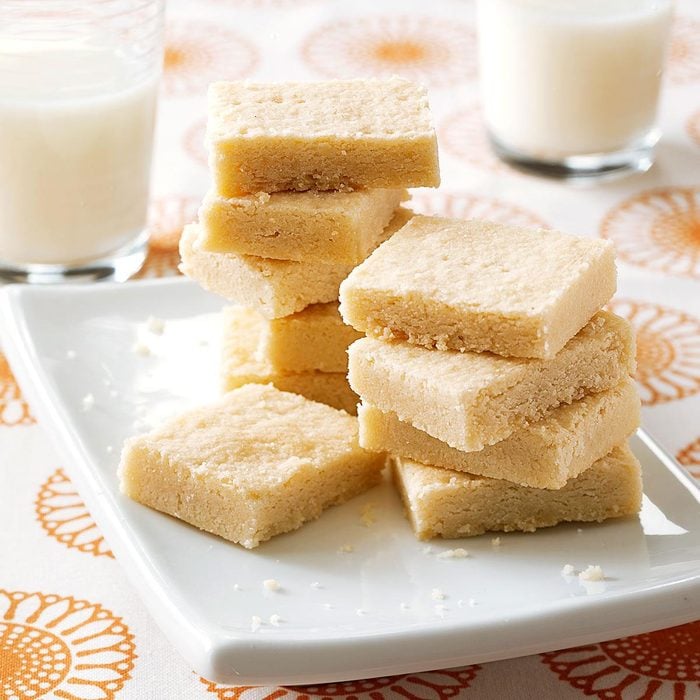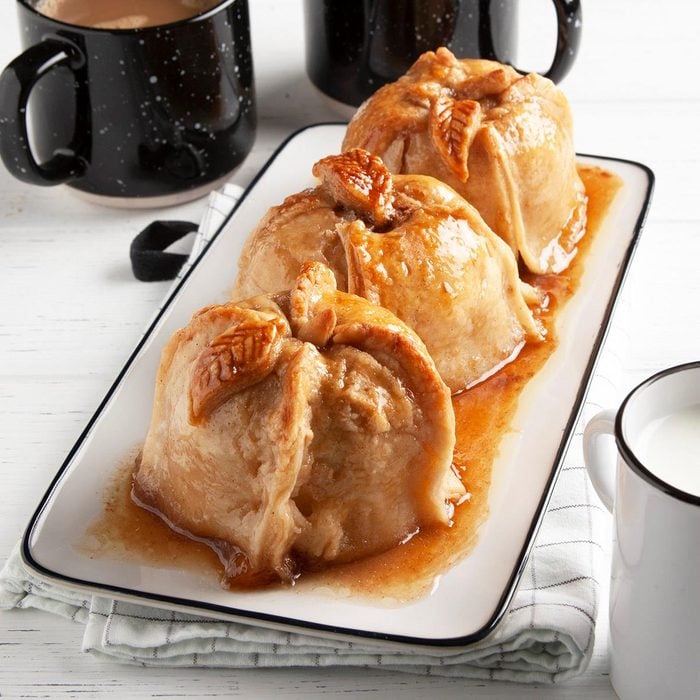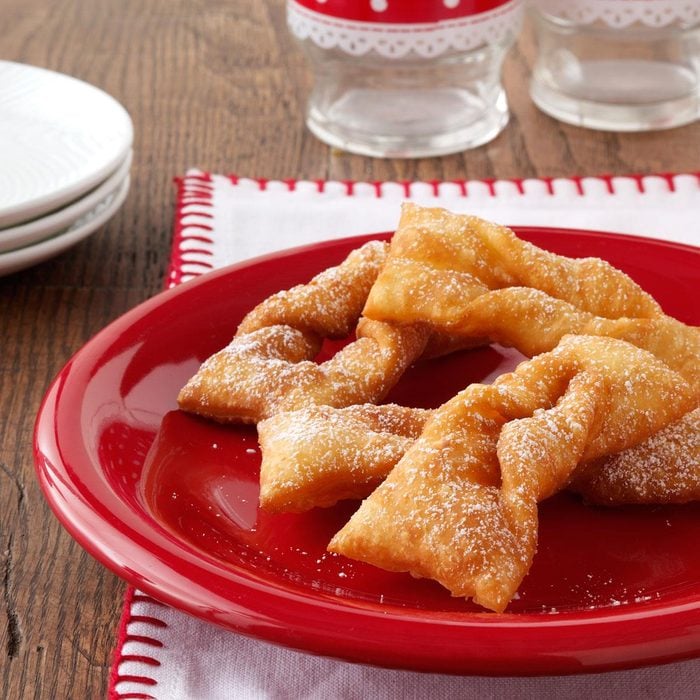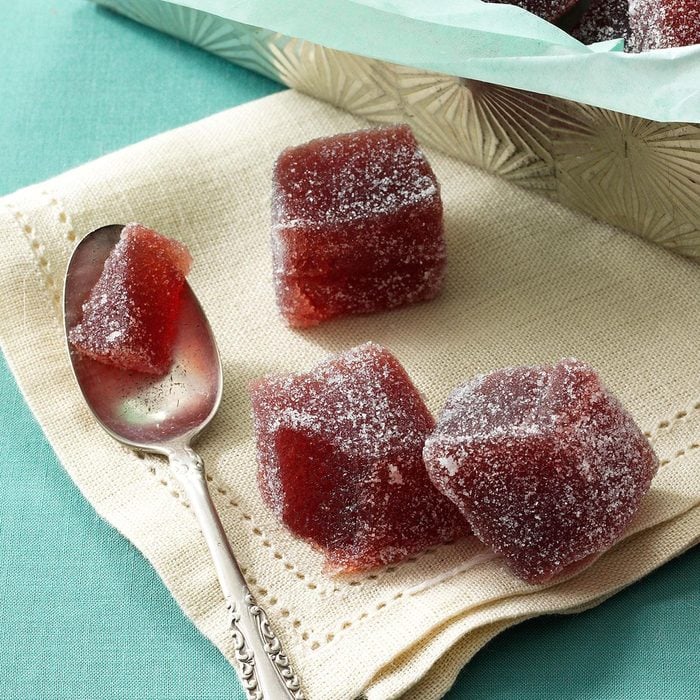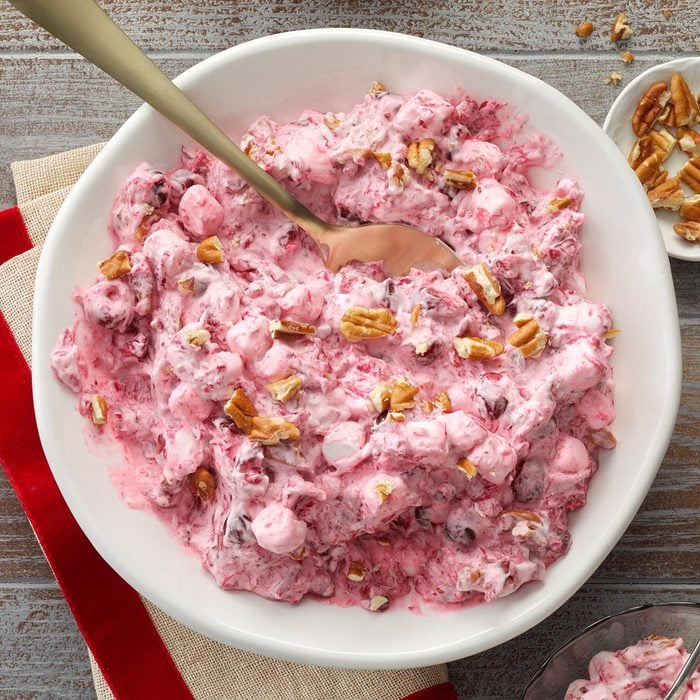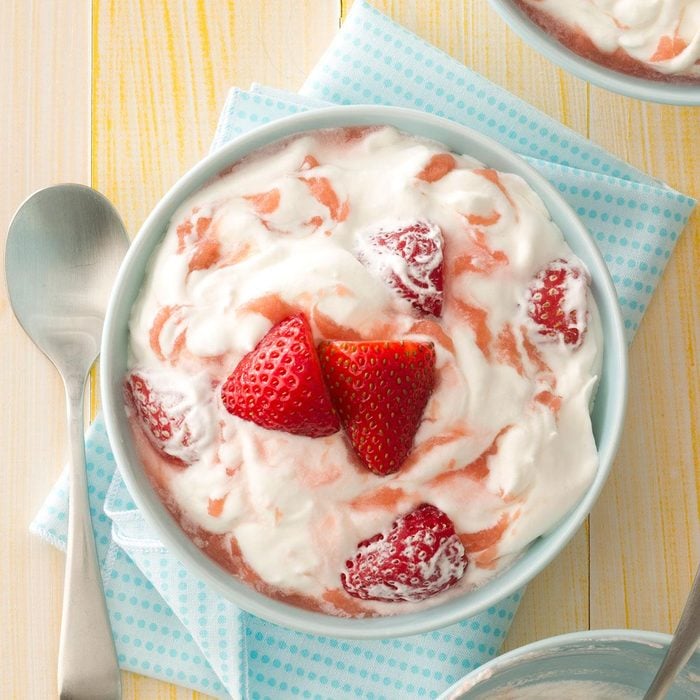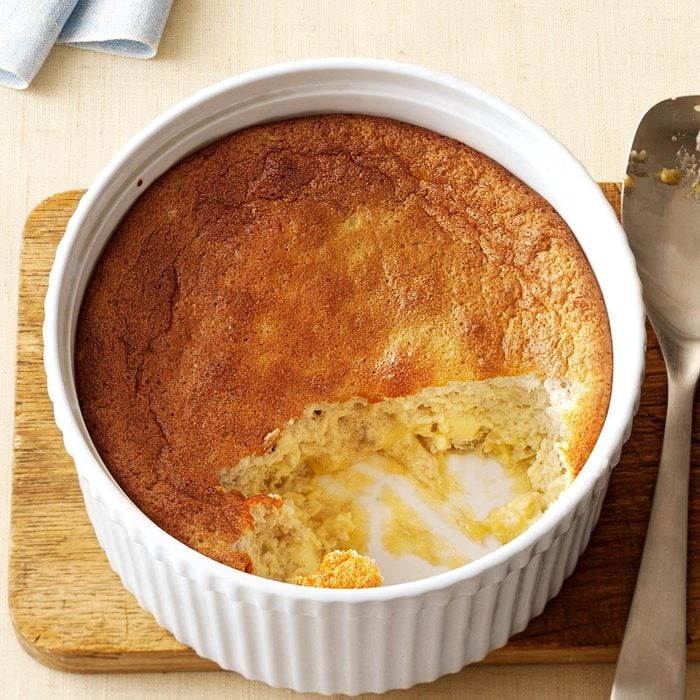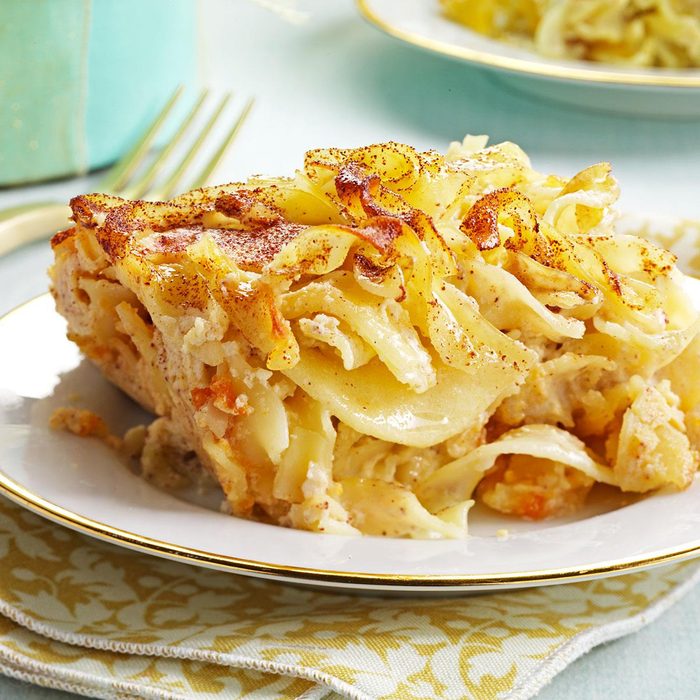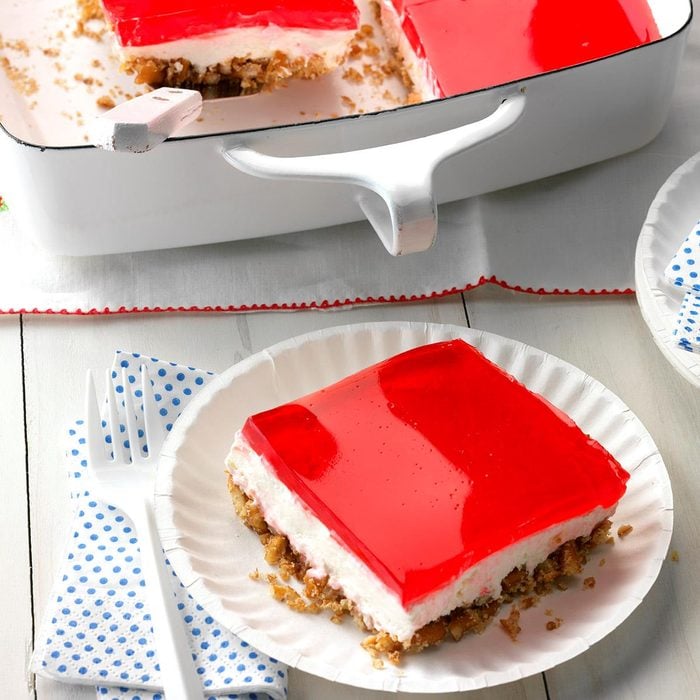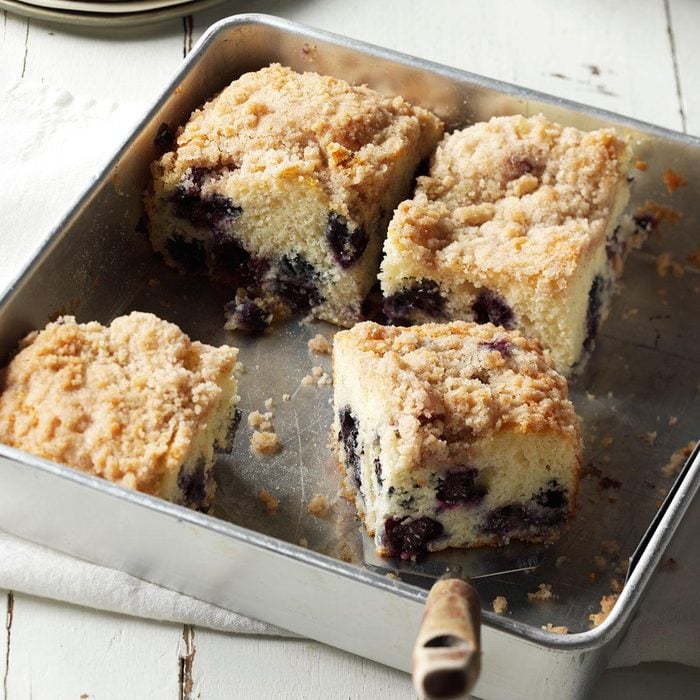Grandma’s Old-Fashioned Strawberry Shortcake
When my grandma served this shortcake, she usually topped it with homemade vanilla ice cream. —Angela Lively, Conroe, Texas
Get Recipe
Marzipan Cups with Currant JellyThese bite-size beauties look and taste gourmet, but they're easy to make and boast a delicate almond flavor. The hidden jelly surprise and pretty nut accent make them a nice addition to any treats tray. You can make them in advance and freeze them for up to three months, if you like. —Lorraine Caland, Shuniah, Ontario
Burnt CustardThe recipe for this smooth-as-silk custard came from a local restaurant years ago. With its broiled topping it looks pretty in individual cups. —Heidi Main, Anchorage, Alaska
Homemade Butterscotch PuddingHomemade pudding reminds me of my grandma and how she turned milk and eggs into creamy textures before my eyes. The
butterscotch in this recipe adds a caramel-sweet touch. —Teresa Wilkes, Pembroke, Georgia
Almond TorteReduced-fat sour cream, egg whites and applesauce lighten up this gorgeous almond torte. A creamy custard filling lends richness. —Kathy Olsen, Marlborough, New Hampshire
Meringue Snowballs In CustardMy family has passed down this elegant dessert generation by generation. It started with my Russian great-grandmother, who traveled to America more than 100 years ago. I love continuing the tradition with her recipe. —Tonya Burkhard, Palm Coast, Florida
Mango Gelatin SaladMy Aunt Nannette often made this salad as a convenient make-ahead dish. The mango mold has hints of apricot and can be served with pork, chicken and beef—or for dessert. —Debra Sult, Chandler, Arizona
Mocha Baked AlaskasMake these baked Alaskas ahead of time—you can torch the completed desserts and freeze them up to 24 hours before serving. —Kerry Dingwall, Ponte Vedra, Florida
Shoofly CupcakesThese were my grandmother's specialty. To keep them from disappearing too quickly, she used to store them out of sight. —Beth Adams, Jacksonville, Florida
Charlotte's Green Tomato PieGreen tomato pie makes an awesome conversation piece. I took it to a potluck and it was a delight to share. —Charlotte McDaniel, Jacksonville, Alabama
Strawberry Crunch Ice Cream CakeWhile growing up, I loved treats from the ice cream truck that rolled through my neighborhood. This ice cream cake is inspired by one of those crunchy, strawberry novelties. —Lisa Kaminski, Wauwatosa, Wisconsin
Divinity CandyEvery Christmas my grandmother and I made divinity candy, just the two of us. I still make it every year. —Anne Clayborne, Walland, Tennessee
Cherry Gelatin SupremeWhen I was growing up, this yummy, easy dessert was always on the menu at holiday get-togethers. Years ago, my aunt gave me the recipe, and now when I make it for my family, I think of her. —Janice Rathgeb, Brighton, Illinois
Lemon Icebox PieOur chilled, no-bake lemon icebox pie is the perfect indulgence on a hot summer’s day.
Skillet Blueberry SlumpDon't let the homey, almost unappetizing name "slump" fool you. Easier than pie, these baked summer
fruit desserts are topped with tasty biscuits. If you love vintage food, learn how to make
cottage cheese biscuits.
Figgy Apple Brie TartOur holiday gatherings often included baked Brie. I transformed it into a dessert that’s savory and sweet. It makes a wonderful appetizer, too. —Kristie Schley, Severna Park, Maryland
Fresh Plum Crumb DessertMy old-fashioned dessert has the perfect sweet-tart balance with its fresh-plum tang and sweet, crispy topping. Imagine it warm from the oven, served with a scoop of ice cream…yum! —Janet Fahrenbruck-Lynch, Cincinnati, Ohio
Old-Fashioned Honey Baked ApplesMy baked apple recipe is very old-fashioned yet tried and true. It's definitely a comfort food. —Rachel Hamilton, Greenville, Pennsylvania
Apple Roly-PolyMy grandmother’s apple dessert is genuine regional fare. With 13 children plus the men at Grandpa’s sawmill, she had to do lots of cooking each day! —Megan Newcombe, Cookstown, Ontario
Grandmother's Corn PuddingMy grandmother always served this pudding for holidays and family reunions. Everyone loves it. Corn pudding is a popular side dish on Maryland's eastern shore. —Susan Brown Langenstein, Salisbury, Maryland
Old-Fashioned Rice PuddingThis comforting dessert is a wonderful way to end any meal. As a girl, I always waited eagerly for the first heavenly bite. Today, my husband likes to top his with a scoop of ice cream. —Sandra Melnychenko, Grandview, Manitoba
Crunchy Candy ClustersThese cereal and marshmallow clusters are so simple that I make them for the holidays each year, as my family looks forward to them. —Faye O'Bryan, Owensboro, Kentucky
LebkuchenDense, chewy lebkuchen is a great addition to your Christmas-cookie routine, but you can make it any time of year. While most lebkuchen contains ginger, this is a ginger-free version that uses other spices and molasses to achieve a similar flavor.
Lemon Chiffon CakeLemon chiffon cake is soft and spongy, with a fresh lemon flavor in the cake and the luscious buttercream frosting. Plan to eat this cake quickly, as chiffon cakes don't last very long. But that shouldn't be a problem, given how delicious this cake is.
Peach BavarianFruit molds are my specialty. This one, with its refreshing peach taste, makes a colorful salad or dessert. —Adeline Piscitelli, Sayreville, New Jersey
Scottish Shortbread CookiesThis simple three-ingredient shortbread cookie recipe makes wonderfully rich, tender cookies. Serve them with fresh berries of the season for a nice, light dessert. You'll get miles of smiles when friends see these at an afternoon tea or a bridal shower. —Marlene Hellickson, Big Bear City, California
Italian Holiday CookiesMany of our holiday traditions center around the foods my mother made while I was growing up. These cookies, which we called "Strufoli", bring back wonderful memories. —Sue Seymour, Valatie, New York
Aunt Ione's Icebox CookiesWhenever we went to visit my Aunt Ione in south Georgia, her icebox cookies were our favorite treat. My mother later make these cookies, and I remember begging for a slice of the raw dough—I thought the unbaked cookies tasted just as great as the baked! —Jenny Hill, Meridianville, Alabama
Traditional Hot Cross BunsOn Easter morning, our family always looked forward to a breakfast of dyed hard-boiled eggs and Mom's hot cross buns. I still serve these for special brunches or buffets. —Barbara Jean Lull, Fullerton, California
Mincemeat TrifleInstead of fixing a traditional pie, I gussied up mincemeat by creating this fancy trifle. The recipe's a time-saver, since it can be prepared a day ahead.
Apple Dumplings with SauceThis warm and comforting apple dumplings recipe is incredible by itself or served with ice cream. You can decorate each dumpling by cutting 1-inch leaves and a 1/2-inch stem from the leftover dough. —Robin Lendon, Cincinnati, Ohio
Easter PieEaster Pie is a specialty in many Italian homes, so mothers make sure their daughters master the recipe to ensure that the tradition continues. —Barbara Tierney, Farmington, Connecticut
Grandma's Polish CookiesThis traditional khruchiki recipe has been handed down through my mother's side from my great-grandmother. As a child, it was my job to loop the end of each cookie through its hole. —Sherine Elise Gilmour, Brooklyn, New York
Banana PuddingI didn’t see my son, Lance Corporal Eric Harris, for more than two years after he enlisted in the Marines after high school. And when I saw him arrive at the airport, I just grabbed hold of him and burst out crying. When we got home, the first thing he ate was two bowls of my easy banana pudding recipe. He’s a true southern boy! It’s a dessert, but you can have it for breakfast, lunch or dinner. —Stephanie Harris, Montpelier, Virginia. Hungry for more? Here's our collection of delicious
retro breakfast recipes.
Apple Bavarian TorteA cookie-like crust holds the sensational filling of cream cheese, apples and almonds. This comforting apple torte will be welcomed addition to a bake sale or potluck. —Sheila Swift, Dobson, North Carolina
Mulled Wine Jelly CandiesI don’t drink alcohol, so after I’ve had company over for dinner, I have to do something with the leftover wine. These unusual jelly candies make a nice hostess gift during the holidays. I make the mulled red wine version for the winter holidays, and a white wine variation in spring and summer.—Jennifer Mack, Pensacola, Florida
Cranberry Ambrosia SaladMy paternal grandmother used to make this for Christmas dinner. I'm not sure how many batches she made since there were nearly 50 aunts, uncles and cousins in our family. I still make the recipe in memory of her, and it's still as good as I remember. —Janet Hurley, Shell Rock, Iowa
Rhubarb Fool with StrawberriesA fool is a classic British and Irish dessert that's usually made with whipped cream and cooked fruit. Try my quick version with rhubarb and berries. —Cheryl Miller, Fort Collins, Colorado
Honey and Spice Snack CakeThe sweetness of honey, the bold flavors of nutmeg and cloves and the crunch of walnuts make for happy snacking. —Taste of Home Test Kitchen, Greendale, Wisconsin
Banana SouffleThis pretty, golden-topped puff is so easy to whip up, but looks like you really fussed. Lightly laced with rum, the moist, tender, banana-rich souffle makes that perfect “little something” to wrap up any holiday dinner. —Crystal Jo Bruns, Iliff, Colorado
Makeover Sweet KugelThis is a traditional recipe I make for the holidays. My close friend and I used to bake together until she moved 1,300 miles away. Now when I make this dish, I’m reminded of our time together. —Eileen Wolf, Abington, Pennsylvania
Strawberry TrifleI won first prize in a dairy recipe contest with this tasty strawberry trifle. You can double the recipe and make two for large groups. —Norma Steiner, Monroe, Wisconsin
Sticky Toffee Pudding with Butterscotch SauceThe classic sticky toffee pudding is a traditional dessert in the United Kingdom. I love that I can just stay home and bake this cake version, featuring saucy butterscotch. —Agnes Ward, Stratford, Ontario
Pretzel Gelatin DessertThis is one of my mother's absolute favorite desserts. The salty pretzel crust is the perfect complement to the sweet cream cheese filling. —Erin Frakes, Moline, Illinois
Down East Blueberry BuckleThis buckle won a contest at my daughter’s college. The prize was four lobsters, but the real reward was the smile on our daughter’s face. —Dianne van der Veen, Plymouth, Massachusetts
No money? No problem! Try this
vintage cake recipe, appropriately named
poor man's cake.
